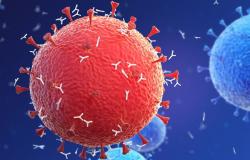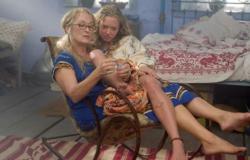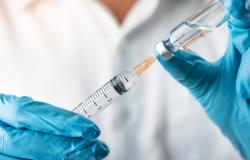Symptoms are often non-specific and the disease carrier may even be asymptomatic, creating diagnostic challenges and increasing the likelihood of transmission.
When there is an STD that affects the anus and rectum region, it is important to remember that there are often co-infections (that is, more than one infection); Furthermore, the transmission of the Human Immunodeficiency Virus (HIV) is facilitated when there is another STD, even worsening the natural history of the disease.
The best way to prevent these diseases is to use a condom.
This article aims to address the most common STDs with anorectal involvement.
Gonorrhea and Chlamydia
A Neisseria gonorrhea and the Chlamydea trachomatis These are bacterial infections that can cause proctitis. The most common symptoms are pain, emission of blood and/or pus from the anus, a feeling of heaviness in the rectum or urgency to defecate. Individuals with the infection may not show symptoms. Chlamydia can mimic Crohn’s disease (inflammatory bowel disease), particularly with the formation of perianal abscesses, fissures or fistulas. Diagnosis is made using a rectal swab and treatment with antibiotics (ceftriaxone for gonorrhea and azithromycin or doxycycline for chlamydia).
Herpes Simplex Virus (HSV)
Typical lesions of HSV are small vesicles that can ulcerate and cause pain and/or pruritus (itching). The virus can also inflame the rectum (proctitis) and, in this case, patients may experience fever, constipation, a feeling of heaviness in the anus, difficulty urinating, tingling or pain in the sacral area.
It is a chronic disease that appears intermittently.
There are 2 subtypes of HSV: type 1, which mainly causes oral and ocular lesions, but is involved in up to 30% of anogenital lesions, normally with a more benign evolution; and type 2, the most frequently implicated in anogenital infections.
The diagnosis is confirmed through a swab or biopsy.
Antivirals (acyclovir, valacyclovir and famciclovir) are important not only for treating vesicles/ulcers but also for preventing recurrences and transmission to sexual partners; however, the virus always remains latent and other outbreaks of the disease may appear.
Syphilis
Syphilis is also a bacterial disease caused by a spirochete called Treponema pallidum.
The disease is classically divided into 3 phases: the primary phase associated with “hard chancre” (a small lesion that can appear in the genital, oral or anal region) or proctitis; secondary, resulting in skin lesions and enlarged lymph nodes, which can less frequently cause symptoms in other organs, namely the eye, bone, joints, meninges, kidneys, liver and spleen; and tertiary, which appears years later, commonly with the appearance of inflammatory masses in the skin, bone or internal organs (gumatosis), which can also lead to cardiovascular lesions (namely aneurysms) and neurological changes (neurosyphilis).
Hard chancre is a very infectious lesion and can go unnoticed as it does not cause pain or discomfort; it is characterized by an initial reddish elevation that transforms into an ulcer with a hard base, appearing at the site of inoculation (genitals, anus or mouth); in the anal region the ulcer is often painful, unlike in the genital area.
The diagnosis of syphilis can be made through blood analysis and the first-line treatment is penicillin.
Human Papilloma Virus (HPV)
Anogenital HPV infection is common, with spontaneous elimination of the virus through the immune system. However, if the infection persists, warts, pre-malignant lesions or cancer may appear, particularly in the anus. The subtypes that cause cancer are different from those that cause warts; The ones that most frequently cause cancer are types 16 and 18 and the ones that most frequently cause warts are types 6 and 11.
Currently, the national vaccination plan includes, at 10 years of age, 2 doses of vaccine (with an interval of 6 months) against HPV infections of 9 genotypes; Vaccination is recommended up to 26 years of age, even after the start of sexual activity.
The available treatments are aimed at the disease and not the virus itself.
Warts are benign lesions in the form of a rough lump on the surface and can appear on the margin of the anus or inside the anal canal. There are several treatments for perianal condylomas, namely the application of cream (imiquimod), cryotherapy (application of liquid nitrogen), surgical removal (electrocauterization), local application of trichloroacetic acid and also therapy with argon plasma. Patients with perianal condylomas should be evaluated in a Proctology consultation to perform anoscopy (observation of the anal canal). Despite treatment, warts may reappear.
Anal cancer precursor lesions caused by HPV (high-grade squamous intraepithelial lesions) are most often treated by electrocautery, infrared coagulation or argon plasma. Anal cancer is rare in the general population, with no population screening implemented in Portugal, but annual observation in Proctology consultation is beneficial in groups at higher risk, namely patients with HIV infection, men who have sex with men, women with history of lower genital tract cancer and transplant patients.
It is also intended to emphasize that anal sexual intercourse is also a form of transmission of HIV or Hepatitis B Virus (HBV) and that gastrointestinal infections can also be transmitted, including leading to chronic diarrhea such as giardiasis.
Text: Ana Lúcia Sousa,
Graduated Gastroenterology Assistant at
Hospital Cuf Santarém and Hospital Cuf Leiria.
Tags: Anorectal Sexually Transmitted Diseases STDs anus rectum Health SAPO .pt
--





